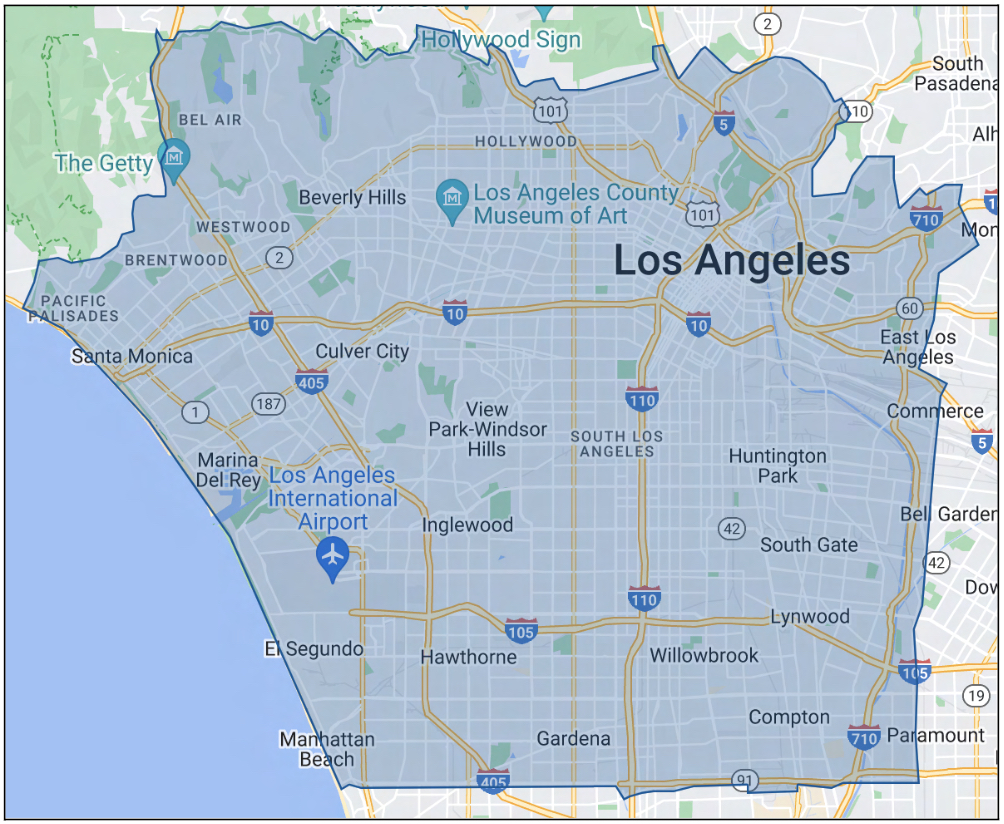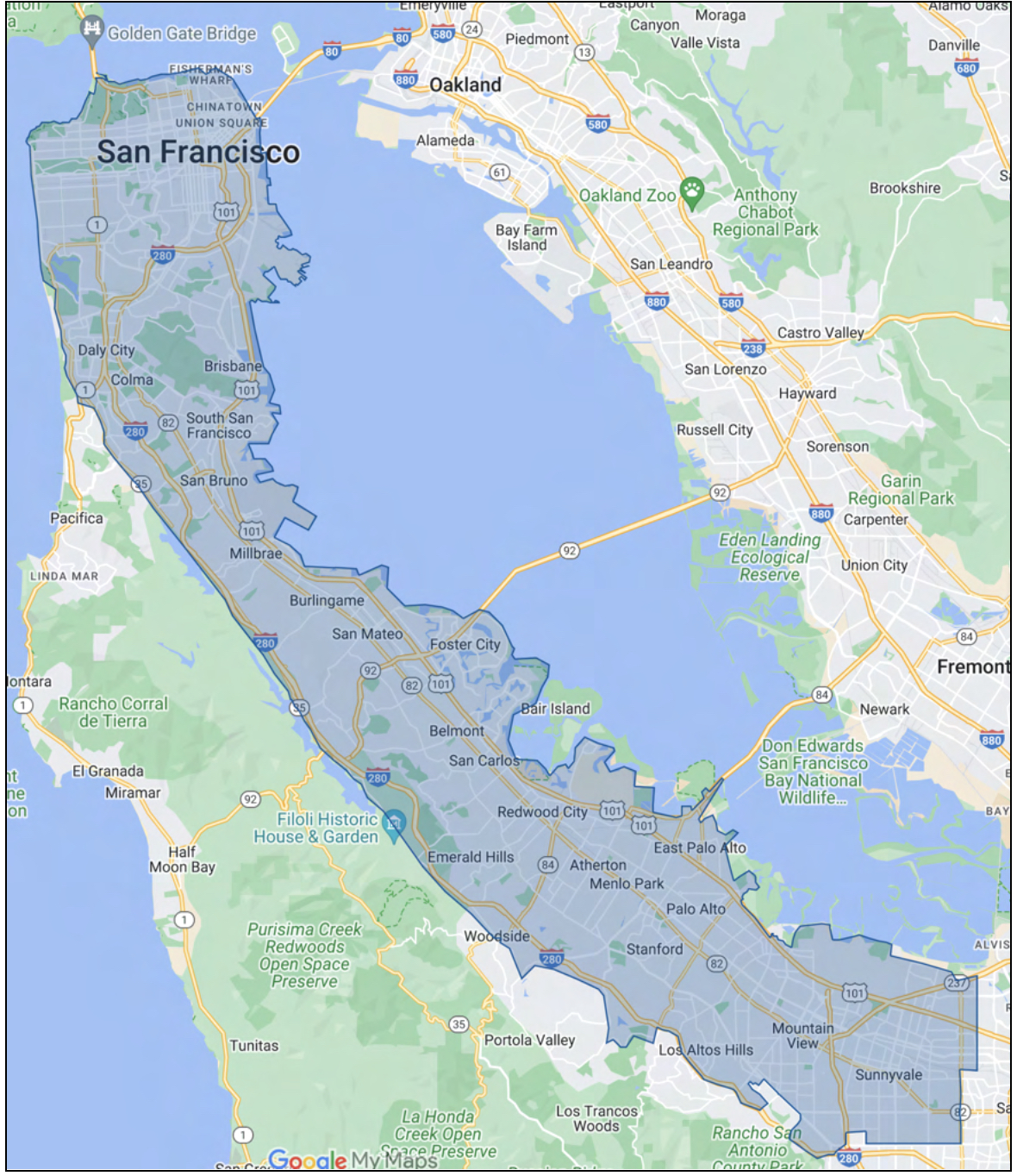Waymo, the self-driving startup owned by Google parent company Alphabet, has been approved by a California agency to expand operations to Los Angeles, after previously only serving the city of San Francisco within the state.
On Friday, the California Public Utilities Commission (CPUC) approved Waymo’s recent request to expand to the Southern California city, though a few counties and other groups in the state have submitted protests. Still, effective on March 1, Waymo can operate driverless ride-hailing operations in Los Angeles, as well as to additional areas of the San Francisco Peninsula.
“CPED approves Waymo’s updated PSP and authorizes expansion of Waymo’s Driverless Deployment service to the areas of Los Angeles and the San Francisco Peninsula it has requested,” the agency wrote in the letter. “Waymo may begin fared driverless passenger service operations in the specified areas of Los Angeles and the San Francisco Peninsula, effective today.”
According to the letter detailing the approval and statements from the state’s Consumer Protection and Enforcement Division (CPED), the agency received 81 supportive responses from state counties and other organizations, while it received protests from the following five municipalities and groups:
- City of South San Francisco
- County of San Mateo
- Los Angeles Department of Transportation
- San Francisco County Transportation Authority
- San Francisco Taxi Workers Alliance
“We’re grateful to the CPUC for this vote of confidence in our operations, which paves the way for the deployment of our commercial Waymo One service in LA and the SF Peninsula,” the company wrote on X on Friday. “This wouldn’t be possible without the ongoing support of our riders, community partners, and policymakers. We can’t wait to bring the benefits of the Waymo Driver to more riders in more places!”
You can see the full CPUC letter approving Waymo’s LA expansion below, along with the proposed expansion areas that have been approved below that.
Credit: Waymo Credit: Waymo

In Arizona, Waymo recently expanded its driverless testing operations to include highways around Phoenix, expected to make ride times significantly shorter for passengers. In both states, the company operates Jaguar I-Pace vehicles equipped with several sensors to perform driverless rides.
Last month, California Senator Dave Cortese also introduced a bill that could create more barriers for Waymo and other companies trying to expand self-driving operations. The bill, dubbed SB 915, aims to give local municipalities more power in deciding where driverless vehicles can operate in their own communities, which could limit further expansion efforts or approved operation areas.
Waymo has also faced some criticism in downtown San Francisco, where it was approved to operate driverless vehicles for 24 hours a day in August. Protests against the company started last year with pedestrians placing a safety cone on the hood of Waymo vehicles, which would sometimes stop the vehicles from operating. At the time, the group responsible, called Safe Street Rebel, said that it expected such protests to become more commonplace.
Last month, a group of people surrounded a Waymo robotaxi and began vandalizing it, eventually setting the vehicle on fire by lighting fireworks off inside of it. In response to the incident, Waymo said the driverless vehicle “was not transporting any riders and no injuries have been reported,” adding that the company was “working closely with local safety officials to respond to the situation.”
Waymo driverless robotaxi attacked and set on fire in San Francisco
What are your thoughts? Let me know at zach@teslarati.com, find me on X at @zacharyvisconti, or send your tips to us at tips@teslarati.com.

Elon Musk
Elon Musk’s X will start using a Tesla-like software update strategy
The initiative seems designed to accelerate updates to the social media platform, while maintaining maximum transparency.

Elon Musk’s social media platform X will adopt a Tesla-esque approach to software updates for its algorithm.
The initiative seems designed to accelerate updates to the social media platform, while maintaining maximum transparency.
X’s updates to its updates
As per Musk in a post on X, the social media company will be making a new algorithm to determine what organic and advertising posts are recommended to users. These updates would then be repeated every four weeks.
“We will make the new 𝕏 algorithm, including all code used to determine what organic and advertising posts are recommended to users, open source in 7 days. This will be repeated every 4 weeks, with comprehensive developer notes, to help you understand what changed,” Musk wrote in his post.
The initiative somewhat mirrors Tesla’s over-the-air update model, where vehicle software is regularly refined and pushed to users with detailed release notes. This should allow users to better understand the details of X’s every update and foster a healthy feedback loop for the social media platform.
xAI and X
X, formerly Twitter, has been acquired by Elon Musk’s artificial intelligence startup, xAI last year. Since then, xAI has seen a rapid rise in valuation. Following the company’s the company’s upsized $20 billion Series E funding round, estimates now suggest that xAI is worth tens about $230 to $235 billion. That’s several times larger than Tesla when Elon Musk received his controversial 2018 CEO Performance Award.
As per xAI, the Series E funding round attracted a diverse group of investors, including Valor Equity Partners, Stepstone Group, Fidelity Management & Research Company, Qatar Investment Authority, MGX, and Baron Capital Group, among others. Strategic partners NVIDIA and Cisco Investments also continued support for building the world’s largest GPU clusters.
News
Tesla FSD Supervised wins MotorTrend’s Best Driver Assistance Award
The decision marks a notable reversal for the publication from prior years, with judges citing major real-world improvements that pushed Tesla’s latest FSD software ahead of every competing ADAS system.

Tesla’s Full Self-Driving (Supervised) system has been named the best driver-assistance technology on the market, earning top honors at the 2026 MotorTrend Best Tech Awards.
The decision marks a notable reversal for the publication from prior years, with judges citing major real-world improvements that pushed Tesla’s latest FSD software ahead of every competing ADAS system. And it wasn’t even close.
MotorTrend reverses course
MotorTrend awarded Tesla FSD (Supervised) its 2026 Best Tech Driver Assistance title after extensive testing of the latest v14 software. The publication acknowledged that it had previously criticized earlier versions of FSD for erratic behavior and near-miss incidents, ultimately favoring rivals such as GM’s Super Cruise in earlier evaluations.
According to MotorTrend, the newest iteration of FSD resolved many of those shortcomings. Testers said v14 showed far smoother behavior in complex urban scenarios, including unprotected left turns, traffic circles, emergency vehicles, and dense city streets. While the system still requires constant driver supervision, judges concluded that no other advanced driver-assistance system currently matches its breadth of capability.
Unlike rival systems that rely on combinations of cameras, radar, lidar, and mapped highways, Tesla’s FSD operates using a camera-only approach and is capable of driving on city streets, rural roads, and freeways. MotorTrend stated that pure utility, the ability to handle nearly all road types, ultimately separated FSD from competitors like Ford BlueCruise, GM Super Cruise, and BMW’s Highway Assistant.
High cost and high capability
MotorTrend also addressed FSD’s pricing, which remains significantly higher than rival systems. Tesla currently charges $8,000 for a one-time purchase or $99 per month for a subscription, compared with far lower upfront and subscription costs from other automakers. The publication noted that the premium is justified given FSD’s unmatched scope and continuous software evolution.
Safety remained a central focus of the evaluation. While testers reported collision-free operation over thousands of miles, they noted ongoing concerns around FSD’s configurable driving modes, including options that allow aggressive driving and speeds beyond posted limits. MotorTrend emphasized that, like all Level 2 systems, FSD still depends on a fully attentive human driver at all times.
Despite those caveats, the publication concluded that Tesla’s rapid software progress fundamentally reshaped the competitive landscape. For drivers seeking the most capable hands-on driver-assistance system available today, MotorTrend concluded Tesla FSD (Supervised) now stands alone at the top.
News
Elon Musk’s Grokipedia surges to 5.6M articles, almost 79% of English Wikipedia
The explosive growth marks a major milestone for the AI-powered online encyclopedia, which was launched by Elon Musk’s xAI just months ago.

Elon Musk’s Grokipedia has grown to an impressive 5,615,201 articles as of today, closing in on 79% of the English Wikipedia’s current total of 7,119,376 articles.
The explosive growth marks a major milestone for the AI-powered online encyclopedia, which was launched by Elon Musk’s xAI just months ago. Needless to say, it would only be a matter of time before Grokipedia exceeds English Wikipedia in sheer volume.
Grokipedia’s rapid growth
xAI’s vision for Grokipedia emphasizes neutrality, while Grok’s reasoning capabilities allow for fast drafting and fact-checking. When Elon Musk announced the initiative in late September 2025, he noted that Grokipedia would be an improvement to Wikipedia because it would be designed to avoid bias.
At the time, Musk noted that Grokipedia “is a necessary step towards the xAI goal of understanding the Universe.”
Grokipedia was launched in late October, and while xAI was careful to list it only as Version 0.1 at the time, the online encyclopedia immediately earned praise. Wikipedia co-founder Larry Sanger highlighted the project’s innovative approach, noting how it leverages AI to fill knowledge gaps and enable rapid updates. Netizens also observed how Grokipedia tends to present articles in a more objective manner compared to Wikipedia, which is edited by humans.
Elon Musk’s ambitious plans
With 5,615,201 total articles, Grokipedia has now grown to almost 79% of English Wikipedia’s article base. This is incredibly quick, though Grokipedia remains text-only for now. xAI, for its part, has now updated the online encyclopedia’s iteration to v0.2.
Elon Musk has shared bold ideas for Grokipedia, including sending a record of the entire knowledge base to space as part of xAI’s mission to preserve and expand human understanding. At some point, Musk stated that Grokipedia will be renamed to Encyclopedia Galactica, and it will be sent to the cosmos.
“When Grokipedia is good enough (long way to go), we will change the name to Encyclopedia Galactica. It will be an open source distillation of all knowledge, including audio, images and video. Join xAI to help build the sci-fi version of the Library of Alexandria!” Musk wrote, adding in a later post that “Copies will be etched in stone and sent to the Moon, Mars and beyond. This time, it will not be lost.”










